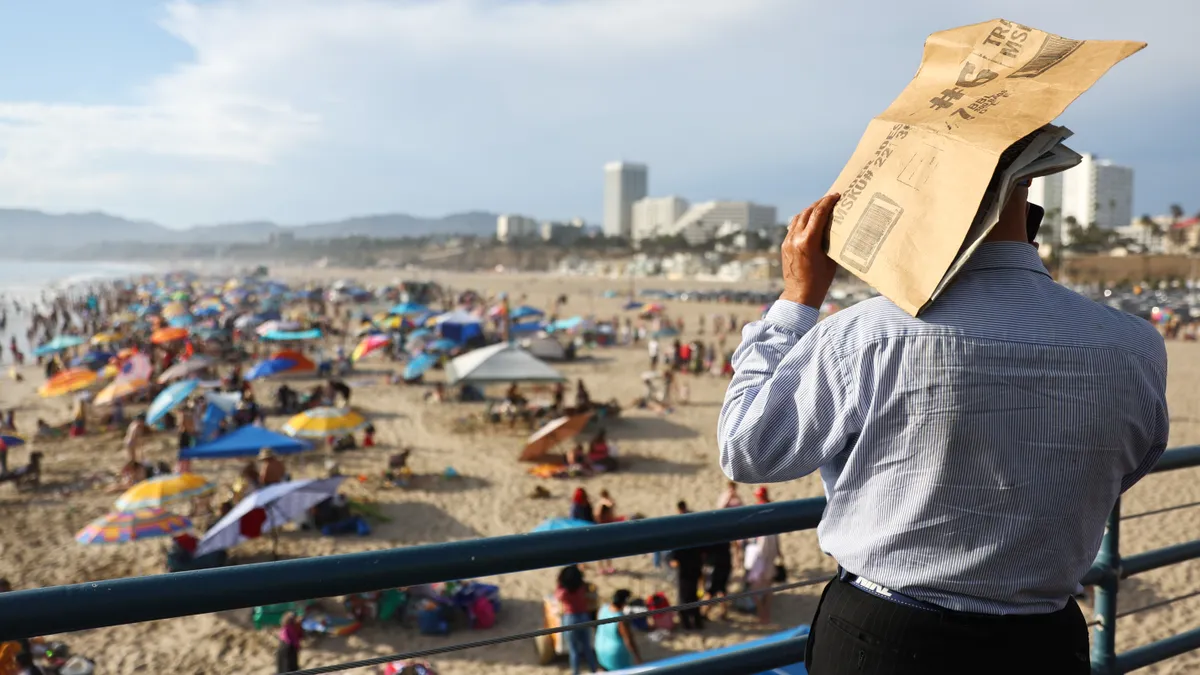With extreme heat on the rise, cities and states across the U.S. will need to rethink their governance structures to protect communities, said government officials and experts at a Thursday webinar led by think tank The Climate Center.
Sweltering temperatures touch every aspect of residents’ daily lives and require a whole-of-government, cross-departmental approach, said Kelly Turner, associate director of the University of California, Los Angeles, Luskin Center for Innovation. While tech solutions will play a role in mitigating urban heat, “where we really need the innovation is in our governance and our regulatory structures because it's not so easy just to put up a shade structure,” she said.
A stark example of these bureaucratic challenges is Los Angeles’ “La Sombrita,” a metal structure unveiled last month at four bus stops that provides a small amount of shade during the day and solar-powered light at night. The project was widely derided online for being ineffective and wasteful, but its designers and the city defended it as an experimental effort to work around the coordination, years of planning and hundreds of thousands of dollars needed to install even modest infrastructure projects.
In Los Angeles and Phoenix, dedicated chief heat officers are working to streamline these types of efforts.
“From the outset, a big part of this work has been un-siloing, coordinating and collaborating, and building plans with other departments,” said Los Angeles’ chief heat officer, Marta Segura, who also directs the city’s Office of Climate Emergency Mobilization. Segura called her position unique because it is within the public works department, but she reports directly to the mayor and City Council.
To get voices from front-line community members into government decision-making, Segura and her team created the Climate Emergency Mobilization Commission, which advises the City Council and mayor on how to develop equitable climate policies. The group consists of tribal leaders, labor representatives, youth, climate health experts and people from pollution-burdened areas.
Segura’s office is working on several plans, but these documents can only go so far, she said. A problem within city government, she said, is “we get overwhelmed with all of these plans, and ... just move on from one plan to another,” she said. “Then we don't align them as strategic investments or strategic initiatives.” She believes cross-department collaboration can lead to more effective responses to extreme heat.
Phoenix’s Office of Heat Response and Mitigation is within the city manager’s office. Director David Hondula says he isn’t afraid to cause a little friction if it means spurring meaningful change. In fact, he considers it a measure of success when he receives a phone call from another department that’s concerned about some of his office’s new ideas. “Sometimes we joke, when we get in a little bit of trouble here, that the heat office wasn't created to maintain the status quo,” he said.
Hondula touted the benefits of regional coordination, pointing to the AZ Heat Resilience Workgroup, which consists of about 50 people from various sectors who meet regularly to discuss best practices for extreme heat response. The group, which was created in 2020, meets biweekly in the warm season and monthly in the cooler season, Hondula said.
Not every jurisdiction will be able to have a chief heat officer, noted Braden Kay, who manages California’s Extreme Heat and Community Resilience Program in the Governor’s Office of Planning and Research. Local governments that don’t have a role dedicated to extreme heat response can turn to community planners, civil engineers, public works professionals, emergency managers and public health officials, he said.
“We need to be developing staff capacity and expertise,” Kay said.
In California, most grassroots extreme heat work and infrastructure implementation should work in partnership with community-based organizations and small businesses, he said.











